Quick Summary:
- Design a mobile-friendly, fast, and easy-to-use website.
- Clearly showcase your services and offer quick quotes online.
- Build trust with customer reviews, an "About Us" page, and security.
- Use a blog and SEO to attract local customers.
Table of Contents
- 1. Compelling Homepage: Your Digital Welcome Mat
- 1.1. First Impressions Matter: Design and Messaging
- 1.2. Call to Action (CTA): Guiding Your Visitors
- 2. Detailed Service Pages: Showcase Your Expertise
- 2.1. Highlighting Moving Company Services
- 2.2. Content Optimization: Educating and Engaging
- 3. Service Areas Page: Targeting Local Customers
- 3.1. Defining Your Geographic Reach
- 3.2. Content Strategy for Service Areas
- 4. Online Quote Request Form: Streamlining the Process
- 4.1. Information Collection
- 4.2. Automated Quote Generation
- 5. About Us Page: Building Trust and Credibility
- 5.1. Sharing Your Story
- 5.2. Visual Content and Storytelling
- 6. Testimonials and Reviews: Social Proof and Validation
- 6.1. Collecting and Displaying Feedback
- 6.2. Reputation Management
- 7. Blog: Content Marketing and SEO
- 7.1. Engaging and Informative Content
- 7.2. Content Promotion and Social Media
- 8. Contact Page: Making it Easy to Connect
- 8.1. Essential Contact Information
- 8.2. Fast Response Times
- 9. FAQs Page: Addressing Common Questions
- 9.1. Anticipating Customer Needs
- 10. Mobile Optimization: Catering to On-the-Go Users
- 10.1. Responsive Design
- 10.2. Mobile-Specific Features
- 11. Security and Trust: Protecting Customer Data
- 11.1. SSL Certificate
- 11.2. Privacy Policy
- 12. Accessibility: Ensuring Inclusivity
- 12.1. Web Content Accessibility Guidelines (WCAG)
- 13. Speed Optimization: Enhancing User Experience
- 13.1. Website Loading Speed
- 14. Internal Promotion: Qrolic Technologies
- 14.1. About Qrolic Technologies
- 14.2. How Qrolic Technologies Can Help Moving Companies
- 14.3. Contact Qrolic Technologies
- 15. Data Analytics: Tracking Performance and Making Improvements
- 15.1. Key Metrics
- 15.2. Google Analytics
- 16. Multilingual Support: Reaching a Wider Audience
- 16.1. Language Options
- 16.2. SEO for Multilingual Websites
- 17. Chatbots: Providing Instant Support
- 17.1. 24/7 Availability
- 18. Video Markfeting: Engaging Content and Brand Building
- 18.1. Video Content Ideas
- 18.2. Video Optimization
1. Compelling Homepage: Your Digital Welcome Mat
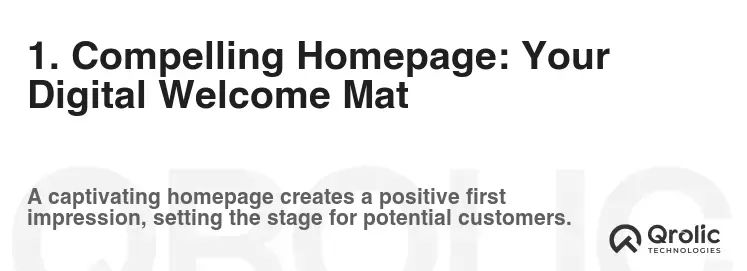
1.1. First Impressions Matter: Design and Messaging
Your homepage is the first encounter potential customers have with your business. Make it count.
- Visually Appealing Design: Use high-quality images and videos showcasing your moving crews in action, happy customers, or well-maintained trucks. Avoid stock photos that look generic. Invest in professional photography that reflects your brand’s personality.
- Clear Value Proposition: Within seconds, visitors should understand what you do and why they should choose you. Use a concise headline and supporting text that highlights your key benefits, such as reliability, affordability, or specialized services. For example: “Stress-Free Moving Solutions – Get a Free Quote Today!”
- Mobile-Responsive Design: Over half of all website traffic comes from mobile devices. Ensure your homepage (and the entire website) is fully responsive and optimized for smartphones and tablets. Test on different devices to ensure a seamless user experience.
- Easy Navigation: Implement a clear and intuitive navigation menu. Common sections include “About Us,” “Services,” “Service Areas,” “Reviews,” “Contact Us,” and “Get a Quote.” Make it easy for visitors to find the information they need quickly.
- Trust Signals: Prominently display trust signals, such as customer testimonials, awards, certifications (e.g., AMSA ProMover), and insurance information. These elements build credibility and reassure potential customers.
- Fast Loading Speed: Optimize images and videos to minimize loading times. A slow website can frustrate visitors and negatively impact your search engine rankings. Use tools like Google PageSpeed Insights to identify and address performance issues.
- Accessibility: Ensure your website is accessible to everyone, including people with disabilities. Follow Web Content Accessibility Guidelines (WCAG) to provide alternative text for images, keyboard navigation, and sufficient color contrast.
1.2. Call to Action (CTA): Guiding Your Visitors
A well-placed and compelling call to action (CTA) is crucial for converting visitors into leads and customers.
- Strategic Placement: CTAs should be placed strategically throughout the homepage, especially above the fold (the area visible without scrolling). Common locations include the header, below the main content, and in the footer.
- Clear and Concise Language: Use action-oriented language that encourages visitors to take the next step. Examples include “Get a Free Quote,” “Book Your Move Now,” “Request a Callback,” or “Learn More About Our Services.”
- Visually Appealing Buttons: Design eye-catching buttons with contrasting colors and sufficient padding around the text. Make them easy to click or tap on mobile devices.
- Different Types of CTAs: Use a variety of CTAs to cater to different stages of the customer journey. For example, a “Free Quote” CTA targets users ready to book, while a “Learn More” CTA is suitable for those still researching their options.
- A/B Testing: Experiment with different CTA text, colors, and placements to determine what works best for your target audience. Use A/B testing tools to track conversion rates and make data-driven decisions.
2. Detailed Service Pages: Showcase Your Expertise
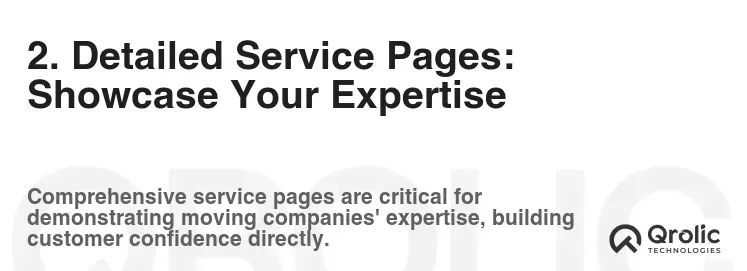
2.1. Highlighting Moving Company Services
Dedicate individual pages to each of your core moving services to provide comprehensive information and cater to specific customer needs.
- Residential Moving: Outline your services for local, long-distance, and international residential moves. Include information on packing, loading, transportation, and unpacking.
- Commercial Moving: Detail your expertise in office relocations, corporate moves, and industrial equipment transportation. Highlight your ability to minimize downtime and ensure a smooth transition.
- Packing Services: Describe your packing options, from full-service packing to partial packing and custom crating. Explain the types of materials you use and your commitment to protecting valuable items.
- Storage Solutions: If you offer storage services, create a dedicated page outlining your storage options (e.g., short-term, long-term, climate-controlled), security features, and pricing.
- Specialty Moving: Highlight your expertise in moving delicate or valuable items, such as pianos, antiques, artwork, and fragile electronics. Emphasize your specialized equipment and techniques.
- Loading and Unloading Services: Offer loading and unloading services for customers who prefer to pack their belongings themselves. Describe your professional handling techniques and attention to detail.
- Unpacking Services: Unpacking services will help to settle down at your new home.
- Moving Supplies: Offer moving and packing supplies on rental or on sale to the customer for their help.
2.2. Content Optimization: Educating and Engaging
Each service page should be informative, engaging, and optimized for search engines.
- Detailed Descriptions: Provide comprehensive descriptions of each service, covering all aspects of the process. Use clear and concise language that is easy for customers to understand.
- High-Quality Images and Videos: Use visuals to showcase your team in action and demonstrate your expertise. Include before-and-after photos, testimonials, and videos of successful moves.
- Benefits-Oriented Language: Focus on the benefits of choosing your services, such as reduced stress, time savings, and protection of valuables.
- Keywords Integration: Incorporate relevant keywords throughout the content, including the service name, related terms, and location-based keywords (e.g., “local residential moving in [city]”).
- Internal Linking: Link to other relevant pages on your website, such as the “About Us” page, “Service Areas” page, and “Contact Us” page. This helps improve navigation and search engine rankings.
- Frequently Asked Questions (FAQs): Include an FAQ section on each service page to address common customer questions and concerns. This can help reduce inquiries and improve customer satisfaction.
- Case Studies: Showcase successful past moves with case studies, highlighting the challenges, solutions, and positive outcomes.
3. Service Areas Page: Targeting Local Customers
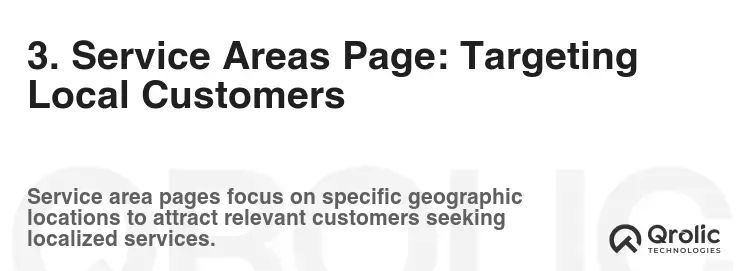
3.1. Defining Your Geographic Reach
A dedicated “Service Areas” page is essential for attracting local customers and improving your search engine rankings for location-based searches.
- Listing All Service Areas: Clearly list all the cities, towns, and neighborhoods you serve. Organize the list alphabetically or geographically for easy navigation.
- Map Integration: Embed a Google Maps map showing your service area boundaries. This provides a visual representation of your coverage and helps customers determine if you serve their location.
- Individual Service Area Pages (Optional): For larger service areas, consider creating individual pages for each city or town. This allows you to target specific keywords and provide more detailed information about your services in that area. For example, “Moving Company in [City Name].”
- Local SEO Optimization: Optimize your “Service Areas” page for local SEO by including relevant keywords, such as “[City Name] moving company,” “[State] movers,” and “[Neighborhood] moving services.”
- Contact Information: Include your phone number and address on the page, as well as a link to your contact form. This makes it easy for local customers to get in touch.
3.2. Content Strategy for Service Areas
Content should be specifically crafted to target the local audiences that you wish to serve.
- Local Information: Include local information about each service area, such as landmarks, attractions, and demographics. This helps demonstrate your familiarity with the area and builds trust with local customers.
- Customer Testimonials: Feature testimonials from customers who have used your services in each service area. This adds credibility and social proof.
- Local Partnerships: Mention any partnerships you have with local businesses or organizations. This can help you reach a wider audience and build relationships within the community.
- Blog Posts: Write blog posts about moving-related topics specific to each service area, such as “Best Neighborhoods to Move to in [City Name]” or “Tips for Moving During the [Season] in [City Name].”
- Community Involvement: Highlight your involvement in local community events or charities. This demonstrates your commitment to the area and helps you build a positive reputation.
4. Online Quote Request Form: Streamlining the Process
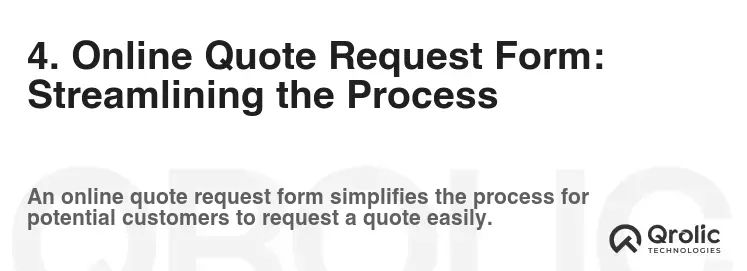
4.1. Information Collection
An easy-to-use online quote request form is crucial for generating leads and providing potential customers with accurate moving estimates.
- Essential Fields: Include essential fields such as name, email address, phone number, moving date, origin address, destination address, and a brief description of the items to be moved.
- Inventory List: Provide an inventory list or checklist to help customers provide a detailed account of their belongings. This can include categories such as furniture, appliances, boxes, and specialty items.
- Special Requests: Include a field for customers to specify any special requests, such as packing services, storage needs, or handling of fragile items.
- Accessibility: Design the form to be user-friendly and accessible on all devices. Use clear labels, appropriate input types, and validation to prevent errors.
- Optional Fields: Include optional fields such as preferred contact method, budget range, and additional comments.
- Data Privacy: Clearly state your privacy policy and how you will use the information collected. Assure customers that their information will be kept confidential.
4.2. Automated Quote Generation
Consider automating the quote generation process to provide instant or near-instant estimates to customers.
- Integration with Pricing System: Integrate the quote request form with your pricing system to automatically calculate estimates based on the information provided.
- Factors Considered: Ensure the pricing system takes into account factors such as distance, weight, volume, services requested, and time of year.
- Customizable Estimates: Allow for customization of estimates based on individual customer needs and circumstances.
- Email Notifications: Send automated email notifications to customers confirming receipt of their quote request and providing an estimated timeframe for receiving a detailed quote.
- Lead Management System: Integrate the quote request form with your lead management system to track and manage leads efficiently.
5. About Us Page: Building Trust and Credibility
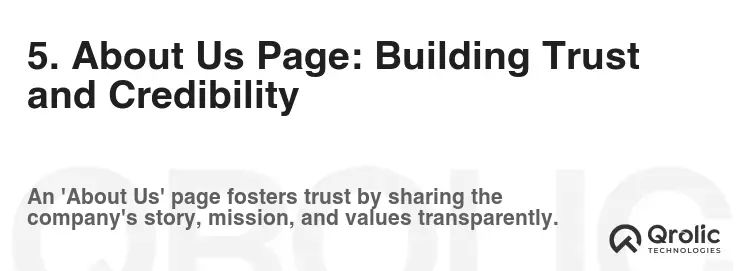
5.1. Sharing Your Story
The “About Us” page is an opportunity to share your company’s story, values, and mission with potential customers.
- Company History: Provide a brief overview of your company’s history, including when it was founded, how it has grown, and any significant milestones.
- Mission and Values: Clearly state your company’s mission and core values. Emphasize your commitment to customer satisfaction, professionalism, and integrity.
- Team Introduction: Introduce your team members, including key personnel, movers, and customer service representatives. Include photos and brief biographies to humanize your company.
- Certifications and Awards: Highlight any certifications, awards, or affiliations your company has earned. This builds credibility and demonstrates your commitment to quality.
- Insurance and Licensing: Clearly state your insurance coverage and licensing information. This provides reassurance to customers and demonstrates your compliance with regulations.
- Community Involvement: Highlight your involvement in local community events or charities. This demonstrates your commitment to the area and helps you build a positive reputation.
5.2. Visual Content and Storytelling
Visuals can play a key part in your story telling process.
- High-Quality Images and Videos: Use high-quality images and videos to showcase your team, equipment, and facilities.
- Customer Testimonials: Feature testimonials from satisfied customers.
- Brand Storytelling: Use storytelling techniques to engage visitors and create an emotional connection. Share anecdotes, customer success stories, and behind-the-scenes glimpses of your operations.
- Timeline: Create a timeline highlighting key events in your company’s history.
- Infographics: Use infographics to present data and information in a visually appealing and easy-to-understand format.
6. Testimonials and Reviews: Social Proof and Validation

6.1. Collecting and Displaying Feedback
Displaying customer testimonials and reviews is crucial for building trust and influencing potential customers’ decisions.
- Dedicated Testimonials Page: Create a dedicated page to showcase customer testimonials and reviews.
- Variety of Formats: Include testimonials in a variety of formats, such as text quotes, video testimonials, and star ratings.
- Authenticity: Ensure that all testimonials are authentic and verified.
- Prominent Placement: Display testimonials prominently throughout your website, including on the homepage, service pages, and quote request form.
- Third-Party Reviews: Link to your profiles on third-party review sites such as Google Reviews, Yelp, and the Better Business Bureau.
- Requesting Reviews: Actively solicit reviews from satisfied customers by sending follow-up emails or using a review management platform.
6.2. Reputation Management
Responding to reviews and addressing negative feedback is an important part of reputation management.
- Monitor Reviews: Regularly monitor your online reputation by tracking reviews on various platforms.
- Respond Promptly: Respond promptly to all reviews, both positive and negative.
- Acknowledge Feedback: Acknowledge the customer’s feedback and express your appreciation for their business.
- Address Concerns: Address any concerns or complaints raised in negative reviews. Offer a solution or resolution if possible.
- Positive Tone: Maintain a positive and professional tone in all responses.
- Learn from Feedback: Use customer feedback to identify areas for improvement and enhance your services.
7. Blog: Content Marketing and SEO
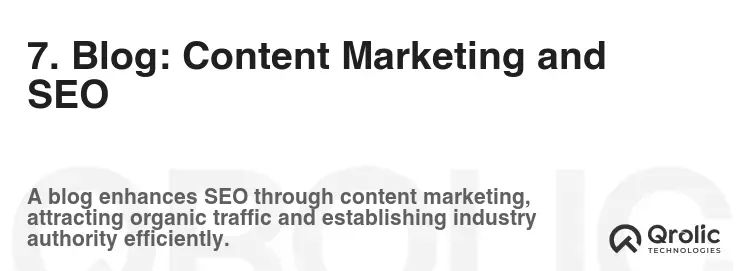
7.1. Engaging and Informative Content
A blog is a valuable tool for attracting new customers, building brand awareness, and improving your search engine rankings.
- Moving Tips and Advice: Share tips and advice on various aspects of moving, such as packing, decluttering, preparing for moving day, and settling into a new home.
- Local Guides: Create local guides to different cities or neighborhoods you serve, highlighting attractions, schools, and other points of interest.
- Company News and Updates: Share company news and updates, such as new services, promotions, and community involvement.
- Customer Success Stories: Feature customer success stories, showcasing how you have helped them with their moving needs.
- Industry Insights: Share insights and trends related to the moving industry.
- Keyword Optimization: Optimize your blog posts for relevant keywords to improve your search engine rankings.
7.2. Content Promotion and Social Media
Promote your blog posts through social media and other channels to reach a wider audience.
- Social Media Sharing: Share your blog posts on social media platforms such as Facebook, Twitter, LinkedIn, and Instagram.
- Email Marketing: Send email newsletters to subscribers, highlighting new blog posts and other relevant content.
- Guest Blogging: Contribute guest posts to other websites or blogs in your industry.
- Link Building: Build links to your blog posts from other websites.
- Commenting: Engage with readers by responding to comments on your blog posts.
8. Contact Page: Making it Easy to Connect
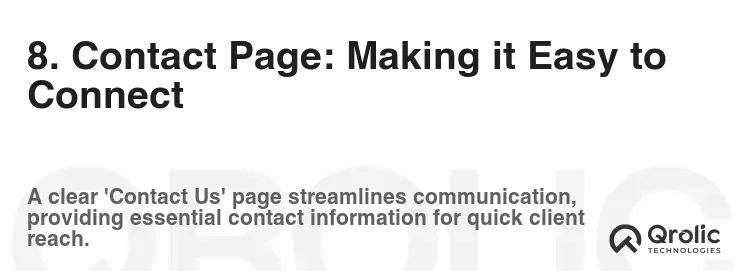
8.1. Essential Contact Information
A clear and informative “Contact Us” page is essential for making it easy for potential customers to get in touch with you.
- Phone Number: Display your phone number prominently on the page.
- Email Address: Provide your email address for written inquiries.
- Physical Address: Include your physical address for customers who prefer to visit your office.
- Contact Form: Embed a contact form for easy online inquiries.
- Social Media Links: Link to your social media profiles.
- Map Integration: Embed a Google Maps map showing your location.
8.2. Fast Response Times
Respond to inquiries promptly and professionally to provide excellent customer service.
- Automated Responses: Set up automated responses to acknowledge receipt of contact form submissions.
- Dedicated Team: Assign a dedicated team to monitor and respond to inquiries.
- Response Time Goals: Set response time goals to ensure that inquiries are addressed promptly.
- Multi-Channel Support: Offer multi-channel support, such as phone, email, and live chat.
- Customer Feedback: Solicit customer feedback on your contact process to identify areas for improvement.
9. FAQs Page: Addressing Common Questions
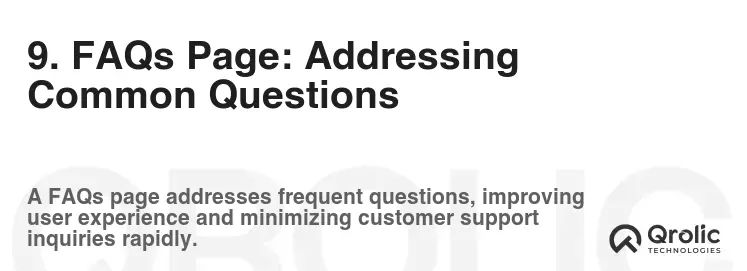
9.1. Anticipating Customer Needs
A comprehensive FAQ page can help answer common customer questions and reduce the number of inquiries you receive.
- Common Questions: Identify and address common questions related to your services, pricing, insurance, and moving process.
- Clear and Concise Answers: Provide clear and concise answers that are easy for customers to understand.
- Categorization: Organize the FAQs into categories for easy navigation.
- Search Functionality: Implement a search functionality to allow customers to quickly find answers to their specific questions.
- Regular Updates: Regularly update the FAQ page to reflect changes in your services or policies.
- Customer Feedback: Solicit customer feedback on the FAQ page to identify any gaps or areas for improvement.
10. Mobile Optimization: Catering to On-the-Go Users
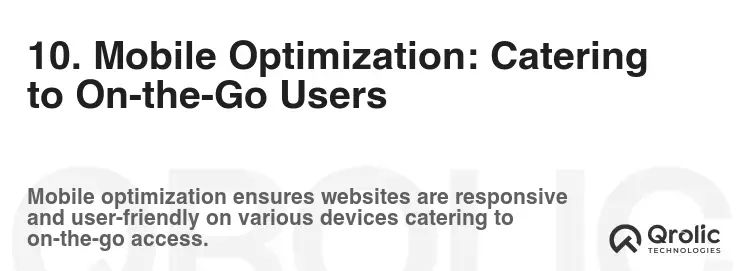
10.1. Responsive Design
Ensure your website is fully responsive and optimized for mobile devices.
- Fluid Layout: Use a fluid layout that adapts to different screen sizes.
- Touch-Friendly Navigation: Implement touch-friendly navigation that is easy to use on mobile devices.
- Optimized Images: Optimize images for mobile devices to reduce loading times.
- Mobile-Friendly Forms: Design mobile-friendly forms that are easy to fill out on small screens.
- Testing: Test your website on different mobile devices to ensure a seamless user experience.
10.2. Mobile-Specific Features
Consider implementing mobile-specific features to enhance the user experience for mobile users.
- Click-to-Call Buttons: Include click-to-call buttons to allow users to easily contact you by phone.
- Geolocation: Use geolocation to provide users with location-specific information, such as nearby service areas.
- Mobile Apps: Consider developing a mobile app for your business to provide users with a convenient way to request quotes, track their moves, and manage their accounts.
11. Security and Trust: Protecting Customer Data
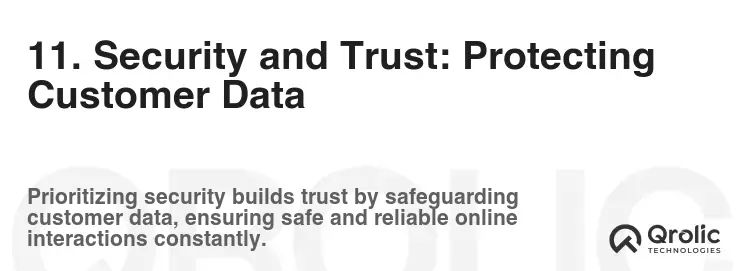
11.1. SSL Certificate
Install an SSL certificate to encrypt data transmitted between your website and users’ browsers.
- HTTPS: Ensure that your website uses HTTPS instead of HTTP.
- Trust Seals: Display trust seals from reputable security providers.
- Secure Payment Processing: Use secure payment processing methods to protect customers’ financial information.
11.2. Privacy Policy
Clearly state your privacy policy and how you will use the information collected from customers.
- Data Collection: Explain what types of data you collect from customers.
- Data Usage: Explain how you use the data collected from customers.
- Data Sharing: Explain whether you share data with third parties.
- Data Security: Explain how you protect the data collected from customers.
- Compliance: Ensure that your privacy policy complies with all applicable laws and regulations.
12. Accessibility: Ensuring Inclusivity
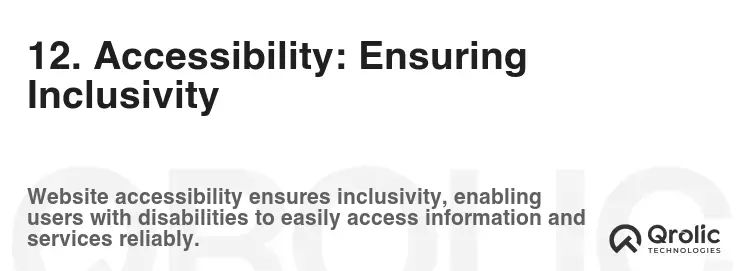
12.1. Web Content Accessibility Guidelines (WCAG)
Follow the Web Content Accessibility Guidelines (WCAG) to make your website accessible to everyone, including people with disabilities.
- Alternative Text: Provide alternative text for images.
- Keyboard Navigation: Ensure that your website can be navigated using a keyboard.
- Color Contrast: Provide sufficient color contrast between text and background.
- Captioning: Provide captions for videos.
- Assistive Technologies: Ensure that your website is compatible with assistive technologies such as screen readers.
13. Speed Optimization: Enhancing User Experience
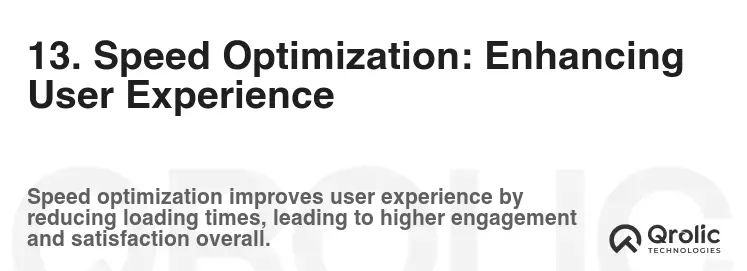
13.1. Website Loading Speed
Optimize your website to load quickly and provide a seamless user experience.
- Image Optimization: Optimize images for web use by reducing file sizes and using appropriate file formats.
- Caching: Implement caching to store frequently accessed data and reduce server load.
- Content Delivery Network (CDN): Use a CDN to distribute your website content across multiple servers.
- Minification: Minify your CSS and JavaScript files to reduce file sizes.
- Compression: Enable compression to reduce the size of files transmitted between your server and users’ browsers.
14. Internal Promotion: Qrolic Technologies
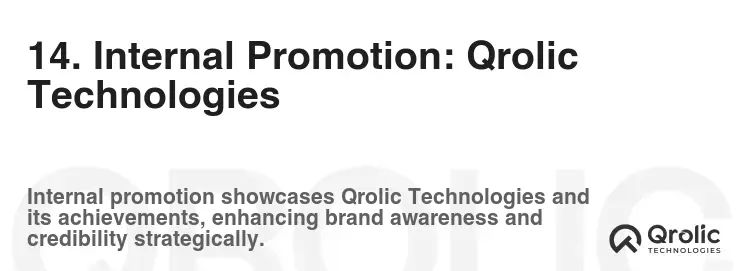
14.1. About Qrolic Technologies
Qrolic Technologies (https://qrolic.com/) provides comprehensive digital solutions to help businesses thrive in the online world. We specialize in website design and development, SEO, digital marketing, and custom software development.
14.2. How Qrolic Technologies Can Help Moving Companies
At Qrolic Technologies, we understand the unique challenges faced by moving companies. We can help you:
- Develop a professional and user-friendly website that attracts new customers and generates leads.
- Optimize your website for search engines to improve your visibility in search results and attract more organic traffic.
- Implement effective digital marketing strategies to reach your target audience and promote your services.
- Develop custom software solutions to streamline your operations and improve efficiency.
14.3. Contact Qrolic Technologies
Contact Qrolic Technologies today to learn more about how we can help your moving company succeed online.
15. Data Analytics: Tracking Performance and Making Improvements
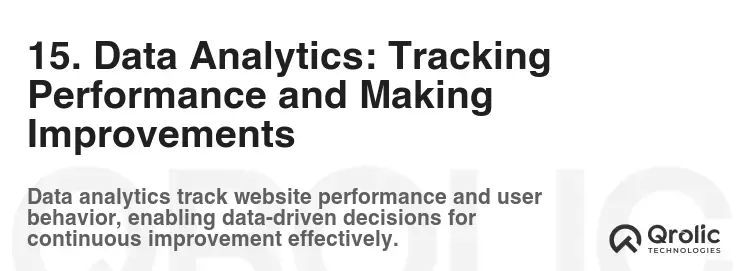
15.1. Key Metrics
Track key metrics to measure the performance of your website and identify areas for improvement.
- Website Traffic: Track the number of visitors to your website.
- Bounce Rate: Track the percentage of visitors who leave your website after viewing only one page.
- Conversion Rate: Track the percentage of visitors who complete a desired action, such as requesting a quote or contacting you.
- Keyword Rankings: Track your website’s rankings for relevant keywords.
- Return on Investment (ROI): Track the ROI of your digital marketing campaigns.
15.2. Google Analytics
Use Google Analytics to track your website traffic, user behavior, and conversion rates.
- Goal Setting: Set goals in Google Analytics to track desired actions, such as quote requests and contact form submissions.
- Custom Reports: Create custom reports to track specific metrics that are important to your business.
- Data Interpretation: Analyze the data in Google Analytics to identify trends and make informed decisions.
16. Multilingual Support: Reaching a Wider Audience
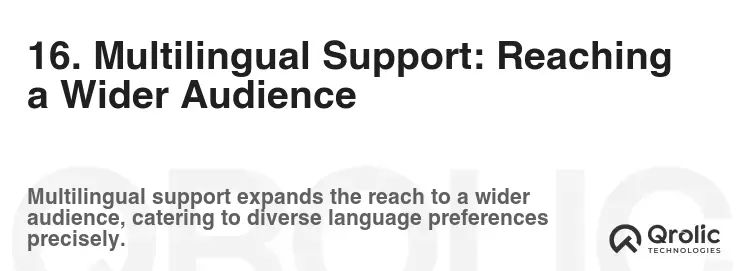
16.1. Language Options
Offer multilingual support on your website to reach a wider audience.
- Translation: Translate your website content into multiple languages.
- Language Selection: Provide a language selection menu to allow users to choose their preferred language.
- Localized Content: Localize your website content to reflect the cultural norms and preferences of different regions.
16.2. SEO for Multilingual Websites
Optimize your website for search engines in multiple languages.
- Hreflang Tags: Use hreflang tags to tell search engines which language and region your content is targeting.
- Keyword Research: Conduct keyword research in multiple languages to identify relevant keywords.
- Localized Content: Create localized content that is relevant to different regions.
17. Chatbots: Providing Instant Support

17.1. 24/7 Availability
Implement a chatbot on your website to provide instant support to customers 24/7.
- Automated Responses: Program the chatbot to answer common questions and provide helpful information.
- Live Chat Integration: Integrate the chatbot with a live chat system to allow human agents to take over conversations when necessary.
- Lead Generation: Use the chatbot to generate leads by collecting contact information from visitors.
18. Video Markfeting: Engaging Content and Brand Building
18.1. Video Content Ideas
Incorporate video marketing into your website to engage visitors and build your brand.
- Company Overview: Create a video that provides an overview of your company, its services, and its values.
- Customer Testimonials: Feature customer testimonials in video format.
- Moving Tips: Create videos that provide moving tips and advice.
- Behind-the-Scenes: Show behind-the-scenes footage of your operations.
- Animated Explainers: Create animated explainer videos to simplify complex concepts.
18.2. Video Optimization
Optimize your videos for search engines and social media.
- Keyword Research: Conduct keyword research to identify relevant keywords for your videos.
- Title and Description: Write compelling titles and descriptions for your videos.
- Tags: Use relevant tags to categorize your videos.
- Thumbnails: Create eye-catching thumbnails for your videos.
- Closed Captions: Add closed captions to your videos to make them accessible to everyone.









